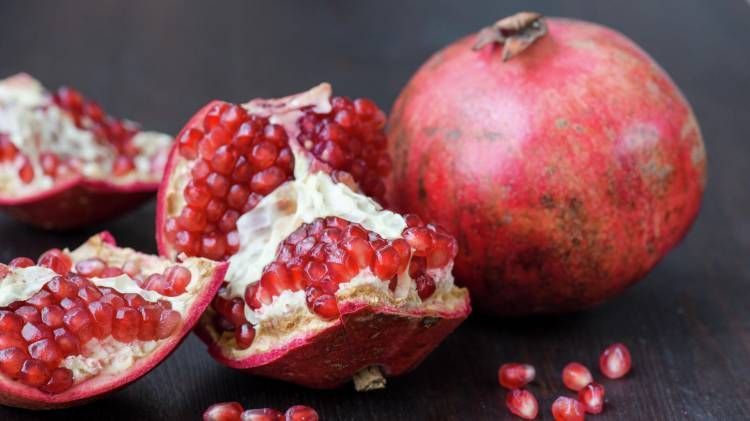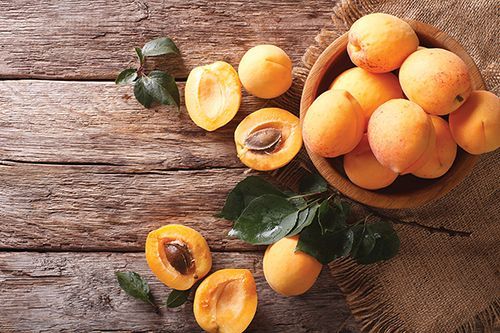Armenian Pomegranates
Armenian Pomegranates: The Symbol of Life and Fertility

The pomegranate, a fruit with deep roots in Armenian culture and history, stands as a symbol of life, fertility, and abundance. Revered for its vibrant red color, sweet-tart flavor, and numerous health benefits, the pomegranate is much more than just a fruit in Armenia—it is an integral part of the nation's identity, mythology, and traditions.
A Fruit Steeped in Tradition
The pomegranate has been a part of Armenian culture for millennia, with the fruit appearing in ancient art, folklore, and religious texts. In fact, the pomegranate is often referred to as "the fruit of life" in Armenia, symbolizing not only vitality but also the continuity of generations. The fruit’s many seeds, bursting with life, are believed to represent fertility and the interconnectedness of all things.
In Armenian folklore, pomegranates are seen as symbols of prosperity and good fortune. They are featured in many traditional wedding ceremonies, where the fruit is often smashed or shared as a blessing for the newlyweds, wishing them happiness, fertility, and a fruitful life together. Pomegranates also have a significant presence in religious iconography, representing eternal life and divine blessings.
The Pomegranate's Journey from Blossom to Harvest
Pomegranate trees thrive in Armenia's sunny, Mediterranean-like climate, flourishing in the fertile soils of regions like Ararat Valley and the surrounding areas. The trees bloom in late spring, with stunning flowers in shades of red and orange that eventually give way to the beloved fruit.
The pomegranate harvest season typically begins in late summer and stretches into autumn, when the fruits reach their peak ripeness. Known for their thick, leathery skin, Armenian pomegranates have a deep, ruby-red hue, and their juicy, jewel-like seeds are packed with flavor. Their balance of sweet and tart notes is what makes them so cherished in Armenian cuisine.
A Superfruit with Remarkable Health Benefits
Pomegranates have long been known for their health benefits, and in Armenia, the fruit is a staple in the daily diet. Rich in antioxidants, vitamins, and minerals, pomegranates are celebrated for their ability to promote heart health, improve digestion, and boost the immune system. The juice of the fruit is often consumed fresh, offering a refreshing and nutrient-packed drink that is especially popular during the winter months.
In addition to its juice, pomegranate seeds are used in a variety of traditional Armenian dishes, from salads to stews. The seeds add a burst of color, flavor, and texture, enhancing both sweet and savory recipes. Pomegranate molasses, made by reducing the juice into a syrup, is another cherished ingredient used in cooking, lending a tangy-sweet depth to sauces, marinades, and desserts.
The Pomegranate as a Cultural Icon
Beyond its culinary and health benefits, the pomegranate holds profound cultural significance in Armenia. It is often seen as a symbol of the country itself, representing both the resilience of the Armenian people and the beauty of the land. The pomegranate is featured in national art and architecture, including on Armenia’s coat of arms, where it stands as a powerful emblem of the nation's enduring spirit.
The pomegranate is also celebrated during various cultural festivals, where people gather to share the fruit, enjoy traditional dances and music, and commemorate the harvest season. In the capital city of Yerevan, you'll find markets brimming with pomegranates during the fall, their glossy skin and bright seeds drawing the attention of locals and visitors alike.
Visiting Armenia During the Pomegranate Harvest
For travelers seeking to experience the rich cultural heritage of Armenia, visiting during the pomegranate harvest is a unique opportunity. The sight of pomegranate trees heavy with fruit, set against the backdrop of Mount Ararat, is a stunning visual representation of the nation's agricultural prowess and timeless beauty.
Local farmers often invite visitors to join in the harvest, sharing stories of the fruit's significance and offering a taste of the fresh, ripe pomegranates straight from the tree. Pomegranate-themed tours are also common, where guests can learn about the fruit’s history, its role in Armenian culture, and its various culinary uses.
Conclusion
Armenian pomegranates are far more than just a fruit—they are a symbol of life, love, and resilience. From ancient traditions to modern culinary uses, the pomegranate has earned its place as one of Armenia’s most cherished treasures.
Whether enjoyed fresh, as juice, or in a variety of traditional dishes, pomegranates offer a taste of Armenia’s rich heritage and cultural vitality. For anyone lucky enough to experience the fruit in its native land, it is a reminder of the deep connection between the Armenian people and the land that has sustained them for centuries.







